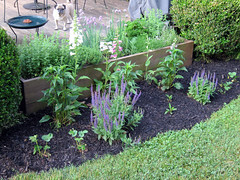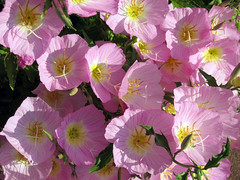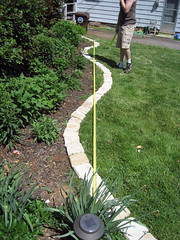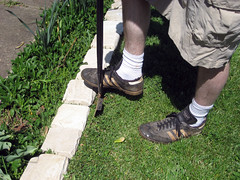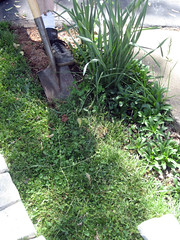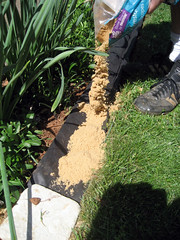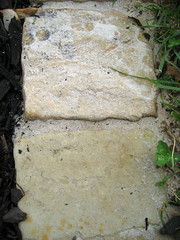Colorado Potato Beetles
Back in March I planted Yukon Gold potatoes at the bottom of the lower left bed and Red Cloud Hybrid beets at the top. This weekend I finished off the bed by sowing squash in 2' mounds, tucking some extra eggplant between the mounds. Marigolds fill in the empty spaces to help protect against insects.

As it turns out, marigolds do not help protect against this nasty insect, the Colorado Potato Beetle, identified at its larval stage by its reddish brown ribbed body, black head, and pair of dark spots down either side of the body.
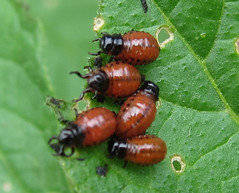
According to every article I've read, the Colorado Potato Beetle is a nasty little bugger that quickly builds up resistance to pesticides and will defoliate potatoes, tomatoes and peppers in a short amount of time. Thankfully, my potato beetles are still in the stage 1 larval period, and have not caused much damage.
The small holes in the leaves are from flea beetles, which don't eat a whole lot compared to potato beetles. The potato beetles, on the other hand, join forces with their newly hatched siblings to tear down any potato plant in range!

They do the most damage in their stage 4 larval form, which I am trying to keep them from reaching. Since I have just a single 10' row of potatoes, manually squashing them to control the population shouldn't be a problem. I'll have to keep an eye on the tomatoes too, because I certainly don't want them setting their sites on other plants!
Labels: "colorado potato beetle", eggplant, larvae, potatoes, squash

